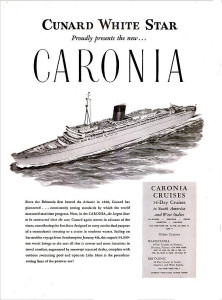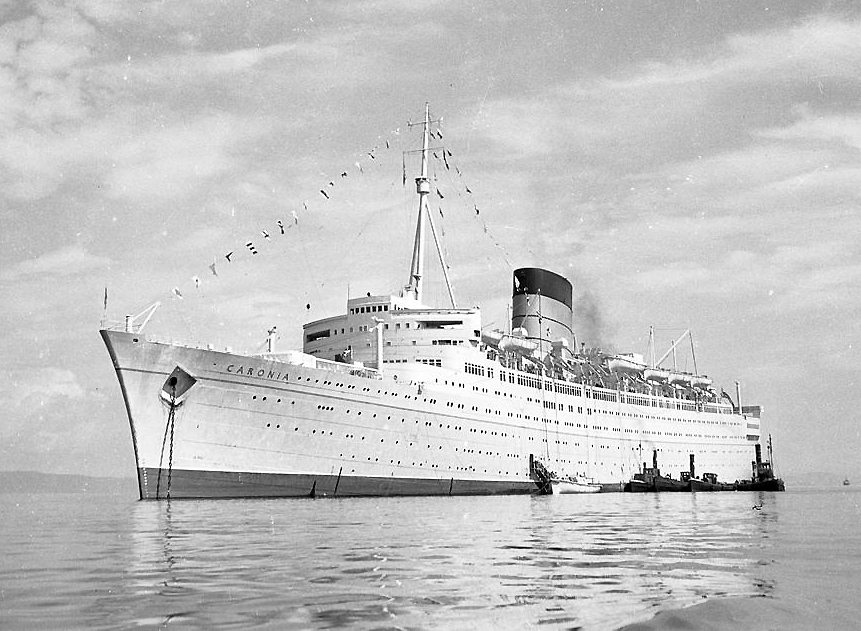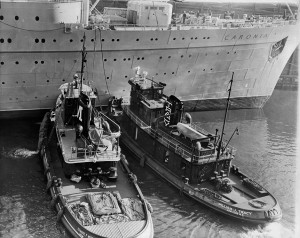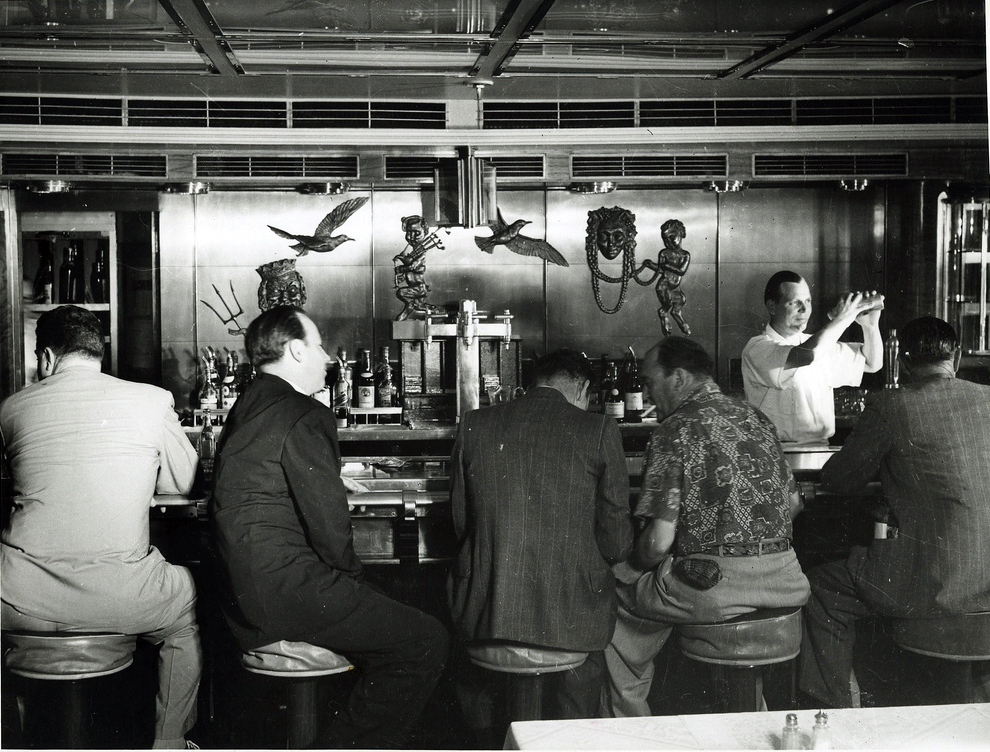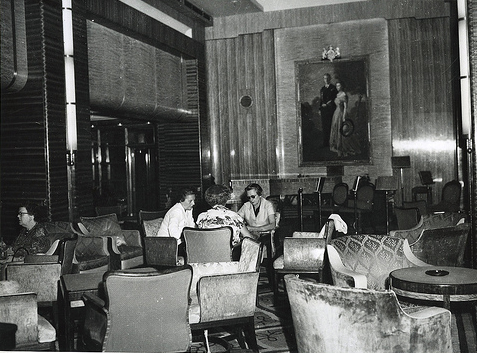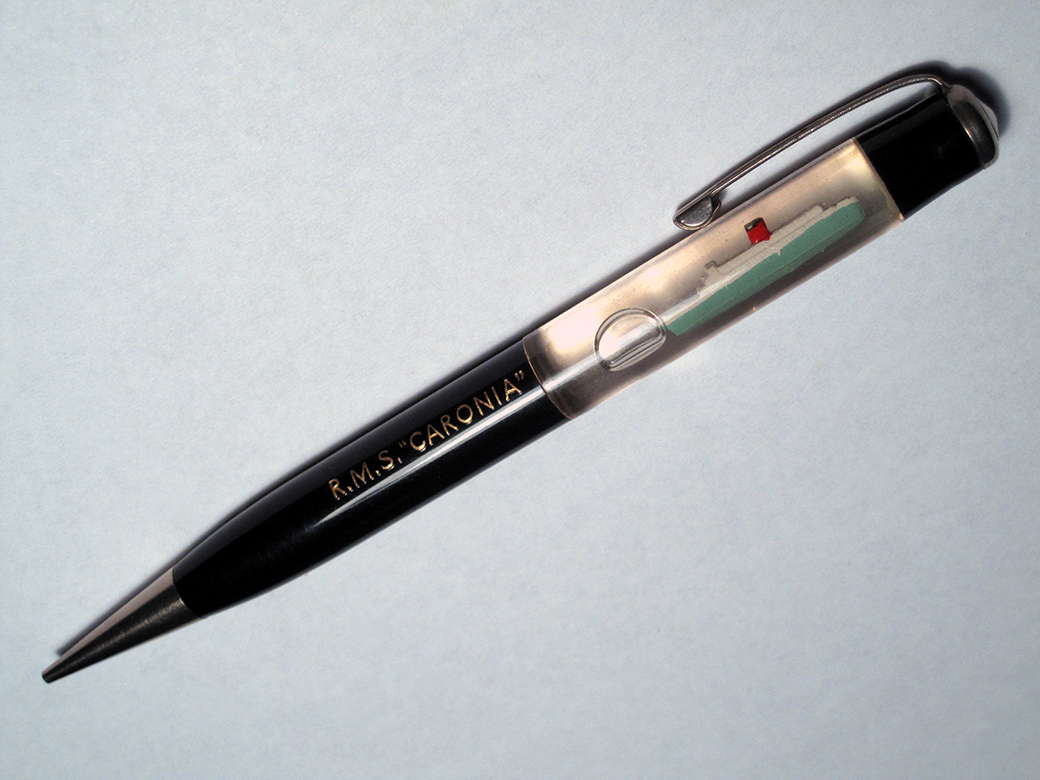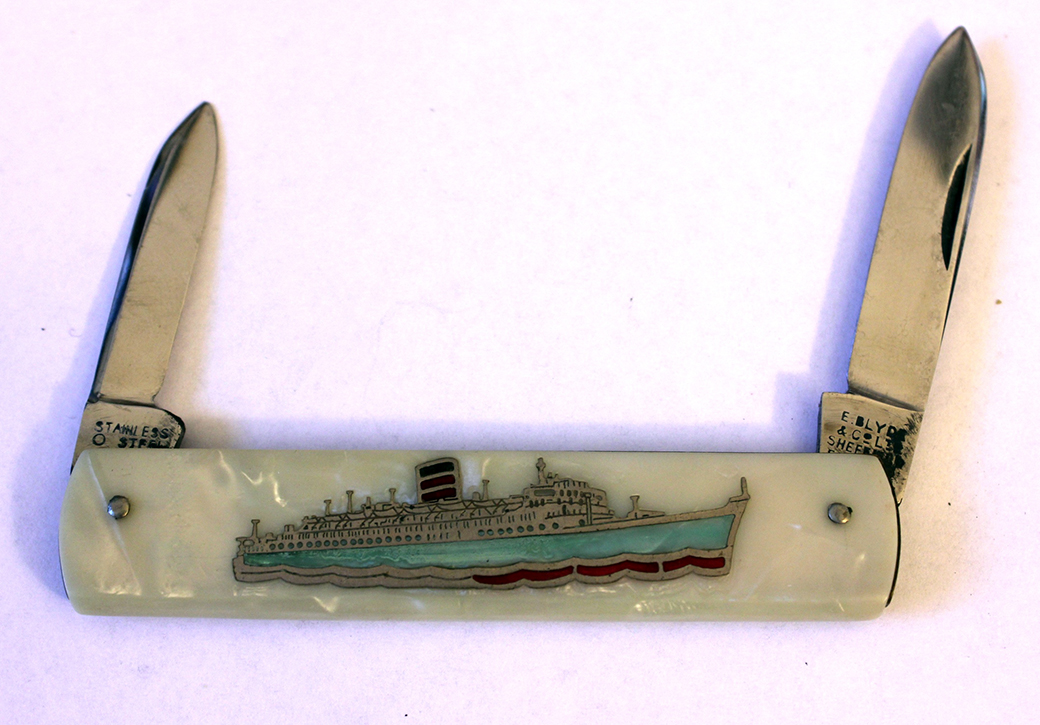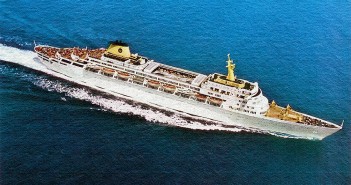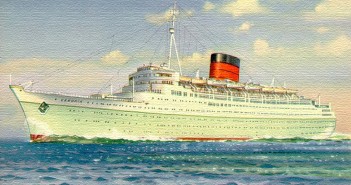On 30 October 1947, a Cunard liner that became perhaps the greatest cruise ship ever was launched.
Caronia (1949) or “The Green Goddess,” as she was affectionately known, was conceived as a transatlantic liner for the jet age. The ship was designed to supplement Queen Mary and Queen Elizabeth (1940) on the North Atlantic in the busy summer months and then cruise warmer waters during the winter. She was painted in three shades of green (except for her funnels, of course), providing the basis of her nickname.
The 34,183 GRT Caronia was 715 feet long and 91 feet at beam. She had a service speed of 22 knots and could carry up 932 passengers (581 first class, 351 tourist class). Other than her hull color, Caronia’s most noticeable feature was her large funnel, one of the largest ever installed on an ocean liner or cruise ship. In high winds, the funnel often acted like an unwanted sail, making a challenge to keep the ship on course.
Caronia’s launching ceremony was Princess Elizabeth’s last public engagement before her marriage to the Duke of Edinburgh A portrait of the royal couple was later installed at one end of Caronia’s main lounge on Promenade deck.
Caronia quickly became a popular liner, thanks to her compact size and comfortable furnishings. She was the first Cunard liner with private bathroom facilities in every cabin. Caronia’s popularity was such that she had several passengers who lived on her year-round. Mrs. Clara MacBeth, for example, resided on board for 15 years, spending some US$20 million in fares.
By 1959 Caronia was more or less dedicated to full time cruising. In that role, she became a model for everything a cruise ship should be: compact, elegant, luxurious, and efficient. This is why she is still fondly remembered today.
A financially troubled Cunard Line sold Caronia in 1967 and her glamorous aura instantly disappeared. Re-registered by her new owner in Panama, she was given a new name: Caribia. A period of neglect that existed during the last few years of Cunard ownership continued and deepened. On her first (and only) cruise for her new owner, in February 1969, Caribia experienced a malfunction in her waste system. Then an explosion in her engine room killed a crew member and severely scalded another. Finally, the power gave out. Caribia limped back to New York. She never sailed again with paying passengers. At one point, the vessel was abandoned at a New York pier for over three years and suffered the ignomy of being issued a parking ticket by the local authorities (the only ocean liner ever to achieve such a distinction).
While bound for Taiwanese breakers in 1974, ex-Caronia struck the breakwater at Guam and broke apart. It was a sad and undeservedly miserable end for a great and much beloved ship.
Footnote: Caronia was actually a hotel at one point during her active service life, operating as such during the coronation of Queen Elizabeth II (who, while still a princess, had christened the vessel back in 1947). The hotel service came at the end of a 37-day Mediterranean and Northern Europe cruise.
Please help keep Ocean Liners Magazine afloat. Any amount will be greatly appreciated.
—Regards, John Edwards, Editor/Publisher.

